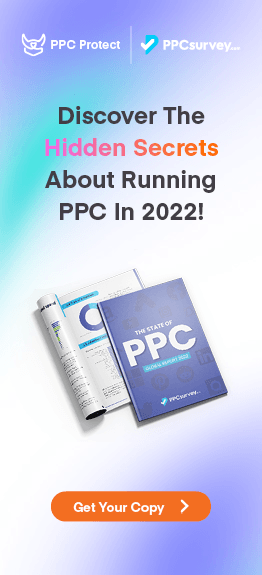If you’ve been browsing through your analytics looking at your website’s paid search analytics, then it’s only a matter of time before you run into a GCLID.
Found added onto the end of a URL or hyperlink, this strange parameter can often cause alarm once first seen. What is this GCLID and why is it on my website? Have I been hacked? Is this breaking my Google ads? What does it mean?
No matter if you’re new to the world of digital marketing, or you’ve been doing it for a while, the GCLID takes everyone by surprise.
If you’re looking for answers about the GCLID and how it affects your users and URLs, then we’ve got them.
To get things started, you’re probably wondering what the GCLID stands for in the first place. Well, we’ve got you covered. Once you understand what it stands for, everything will start to make sense!
What The GCLID Stands For
The GCLID simply stands for Google Click Identifier (not that glamorous, we know!) and follows the same format as many other PPC networks. Facebook Ads also have their own click identifier which is very similar to Google’s. Can you guess what it is? We’ll give you a hint, change the G to an F!
Although these click identifiers have been around for a while now, the chances are you won’t have noticed them unless you check your Google ads account regularly. They often go undetected even though they play a crucial role in your Google Ads and analytics data that we’ll cover later.
In reality, Google could have named their click identifier whatever they wanted, and we could be talking about GCI or GCID right now. However, the characters and what parameter is added to the URL is irrelevant; the most important thing is understanding what it does and why it’s there.
What Does The GCLID Do?

Now you fully understand what the GCLID stands for, what is the GCLID doing to your URLs?
The GCLID is crucial for digital marketing campaigns and without it, all the popular analytics software such as Google Analytics wouldn’t work.
As you may know, Google has various tools and services that it offers to users such as Google Analytics, Google ads, Google search console and so on. In order for all those services to communicate together and share data, it has to be passed over somehow. The smarty pants at Google decided that using a unique tracking parameter is the simplest way to make sure Google ads communicates with their other platforms.
This means that every Google click your ad receives, it will have a tracking parameter built into the ads final URL address. This tracking code is the GCLID with a unique number that can be used in your analytics to display more information about the click received.
The GCLID sends information such as the:
- Source
- Campaign
- Keyword data
- Match type
- Ad Creative (if running on Google’s display network)
- Medium
- Traffic information
- User details
- Landing page
- Conversion tracking
- Page data
All of this information is important for tracking the success of your PPC campaigns and helping turn your paid traffic results into data reports.
Without knowing what your highest converting keyword or landing page is, you would struggle to improve your ROI. Not only is optimisation and reporting one of the foundations of successful digital marketing, but the data from the report can also be beneficial to measuring sales and the performance of PPC marketing.
Thankfully, all of this juicy data is saved in your analytics so you can take advantage of it.
How To Add GCLIDs To Your URLs

Now you understand the importance of GCLIDs and how essential they are for your website and PPC campaigns, you’re probably wondering how they get in the final URL in the first place. If you didn’t add them yourself, then something must be adding them to your URLs, right?
Currently, as part of Google’s ad service, users are given the option to enable “auto-tagging” in their Google Ads account settings. It’s this tagging that automatically adds the GCLID to the end of the final URL without you having to do anything. Not only does this save a lot of time, but it also helps minimise the risk of user errors which could break your ads and website entirely.
Although Google Ads users are free to use their own 3rd party UTM parameters, many opt for Google’s own analytics. Not only is it free, but with the ability to display a range of graphs and charts, it’s incredibly simple and easy to use.
If you do opt for 3rd party tracking software, then you’ll notice your ads won’t contain any GCLIDs in their final URL. Instead, they’ll include a custom tracking identifier, also known as a UTM (Urchin Tracking Module) that is unique to that software and click. This will then add the custom code onto the destination URL and sync up with the software to provide data about whos visiting your landing page and site.
However, unlike Google’s auto-tagging feature you may need to install your own tracking template within Google Ads. If you don’t have any experience doing this, then there’s a possibility you could break your Google ads campaign entirely, so make sure you install it correctly! There’s a reason why Google’s own analytics is so popular, tt’s extremely simple to use!
Enjoy Auto-tagging? What About Auto Fraud Protection?
Having Google automatically collect your ads data and send it to Google analytics is a godsend. Not only does it save you lots of time, but the information you gain from the clicks can help you re-optimise your landing page and improve your site conversion.
If you’re a fan of GCLID auto-tagging and Google analytics working together, then you’ll love Lunio.
Built to protect your ads and save you money, Lunio automatically tracks everyone who clicks your ads and determines if they are fraudulent or not.
Say goodbye to clicks from your competitors and annoying users who keep wasting your budget. Simply install our tracking code in your Google Ads account, and we’ll do all the hard work protecting your search campaigns.
See how much of your monthly marketing budget you can save with our free 14-day trial. Click below to register and install our software; it only takes a few minutes!


